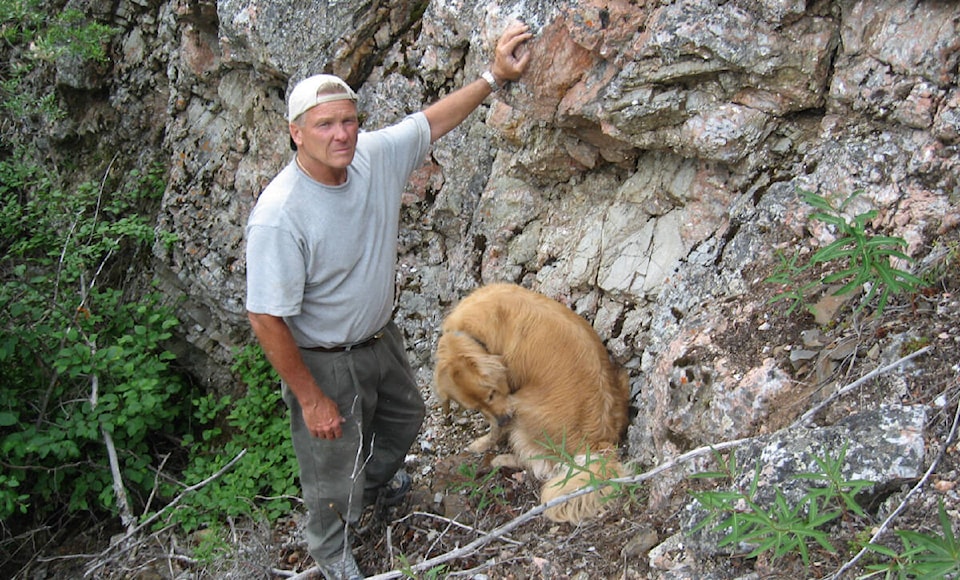Geology has landed Gary Vivian in some extremely remote Northern locations, and a few of those landings had his heart in his throat.
With a career that has spanned more than 40 years, he’s climbed aboard planes and helicopters thousands of times, bound for destinations that many Northerners have never seen.
One trip made him fear for his life when the Beaver he was flying in lost engine power due to a frozen fuel line while outside of Rankin Inlet.
“(The pilot) called mayday a couple of times going down. Although you sort of sh*t your pants, I didn’t really think that we were going to hit that hard because those Beavers glide pretty well,” he recalls.
The plane was on wheel-skis and bounced off a frozen lake, coming to a stop without tragedy.
“He did a good job,” Vivian said of the pilot.
He’s also saved people from helicopter crashes on different occasions. But he was sure to praise the safety records of Northern airlines as the vast majority of his trips went without a hitch.
There have been multiple harrowing wildlife encounters, too. Vivian has awoken to the terrifying sound of his tent being ripped open by a bear’s claws more than once.
“We yelled and screamed and slammed some pots, but he was still coming through,” he recalls of one of the incidents. “Unfortunately, we had to shoot it.”
The caribou south of Diavik and Ekati didn’t pose risk to life and limb, but they wreaked havoc on surveying efforts at times.
“The caribou would walk between myself and the transmitter guy, right over the cable and then we’d spend an hour trying to fix the cable because they cut it up in many places,” he says of their sharp hooves. “They weren’t afraid of us at all.”
Vivian has encountered more than his share of parasitic flying insects on the land as well, but one particular trip still leaves him itchy at the thought: Fox Lake camp, south of Baker Lake, in 1978-79.
“You were wishing for a wind just to get the bugs to be at your back and not at your face. They were unbelievable,” he said, adding that he relied on bug spray to provide some relief from the mosquitoes. “They drive the caribou and the animals absolutely nuts.”
While he was building his reputation as a geologist, he remembers routinely spending three to four months in the field at a time in all seasons — about 80 per cent of his working life at the time. Those were the days when cellphones and other satellite communications devices were not part of the adventure. Four members of the geology team would bunk down in two tents, and they mostly saw eye-to-eye, according to Vivian.
“There weren’t very many times when we didn’t get along, and if we didn’t it was straightened out pretty quick,” he says. “I can’t think of a small camp I was ever in that we had any serious issues where we had to bring a plane to get somebody out.”
Meals commonly consisted of canned meat like Klik that “would last forever,” he recalls. There were also times when they ate canned whole chicken.
His days would be spent doing geophysics, line cutting, mapping, staking, surveying and building camps. He remembers the excitement of being involved in the Kennady North diamonds discovery near Gahcho Kue.
“It was probably the most rewarding experience I ever felt because we took that project from nothing, basically grassroots with a couple of tiny, little kimberlite hits and turned it into a 9-million-tonne resource,” he says.
There have been other times when he’s walked away from exploration sites that never resulted in a significant find, although he felt that there was potential. Sometimes companies quickly run out of money, he explains. There have been periodic opportunities to return with other clients who explore more extensively and wind up with the results that the first company was looking for, Vivian says.
“That’s why we’ve always been about telling clients that you need to explore systematically. Yes, it might be a bit slower, but at least you’re going to get a proper answer. Whereas if you walk away, somebody else comes back 20 years later and finds something,” he says.
The North, he adds, is still a “frontier” ripe for more mineral and metals discoveries.
These days, Vivian spends most of his time mentoring junior geologists and administering programs as a senior project manager and chairman of Aurora Geosciences in Yellowknife.
He has worked in most of Canada’s provinces and all three territories, but it’s the North where he decided to stay.
“I love the people. I love the Indigenous people,” he says. “They’ve been great to work with, and I’m a believer that they are the resource rulers. We tell all of our clients when they come here that you reach out to the communities first before you do any project or anything on the land — you go talk to the land owners first. Whether they’re Inuit or Dene, Métis, you go to the communities first and you introduce yourself.”
